Sky-Watcher just announced they will be joining the the strain wave telescope mount club with their lightweight 100i and 150i Telescope mounts! So let’s take a look at the features of these new mounts and compare them to other harmonic drive mounts that are already on the market at a similar price range, like the ZWO AM3, the AM5, and iOptron’s HAE29.
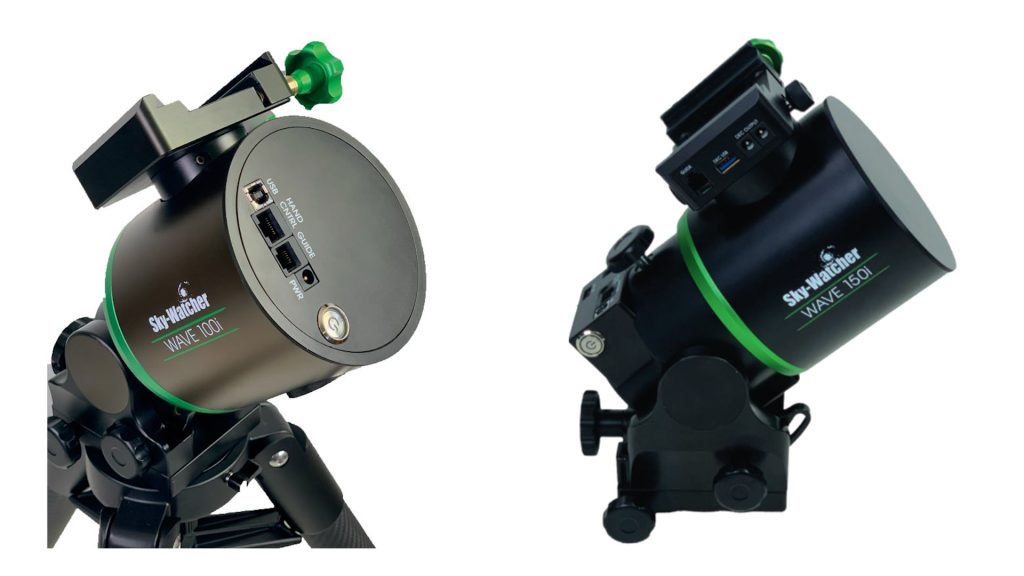
Unlike traditional German equatorial mounts, harmonic drive or strain wave mounts feature a compact, lightweight design, ideal for portable setups. They don’t necessarily need counterweights due to their unique motion mechanism, though adding an optional counterweight does enhance the stability and increases the payload capacity of these telescope mounts. Strain Wave mounts offer minimal backlash and smooth tracking which is great for astrophotography. However, one persistent myth is that they are better at tracking the night sky as compared to traditional German equatorial mounts, which is not necessarily the case. Yet, their portability, accuracy, and convenience render them a compelling choice for many astronomers and astrophotographers.
Sky-Watcher 100i & 150i: Price, weight, and payload capacity
Let’s take a look at the pricing of the 100i and the 150i. Priced at $1695, the Sky-Watcher 100i is slightly more expensive then its direct rival, the ZWO AM3, currently priced at $1499. Considering portability, the mount head of the 100i weighs 4.3 kg, which is slightly heavier than the ZWO AM3’s 3.9 kg. Nonetheless, the 100i offers an higher payload capacity of 10 kg without and 15 kg with a counterweight, exceeding the AM3’s range of 8 kg to 13 kg.
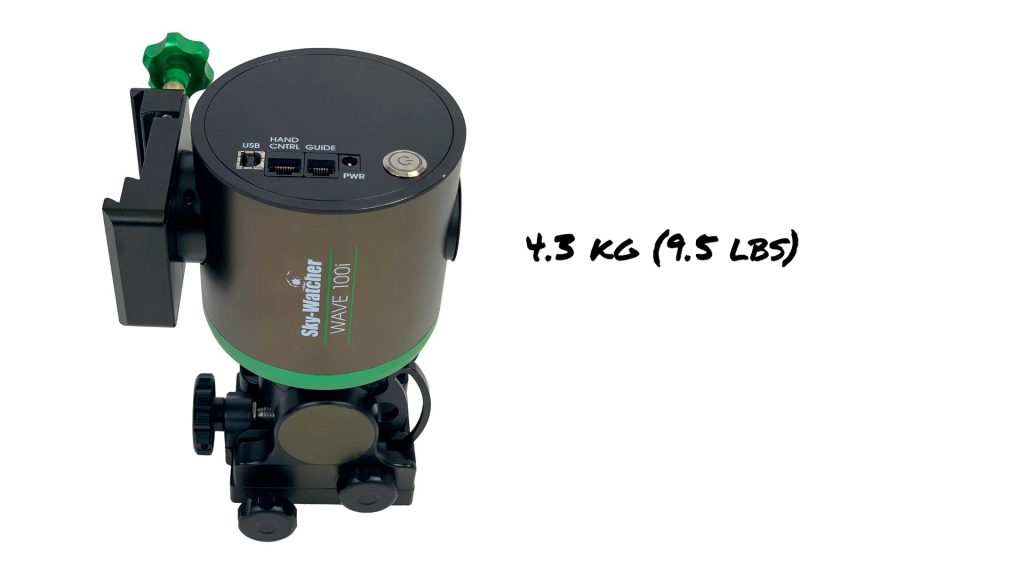
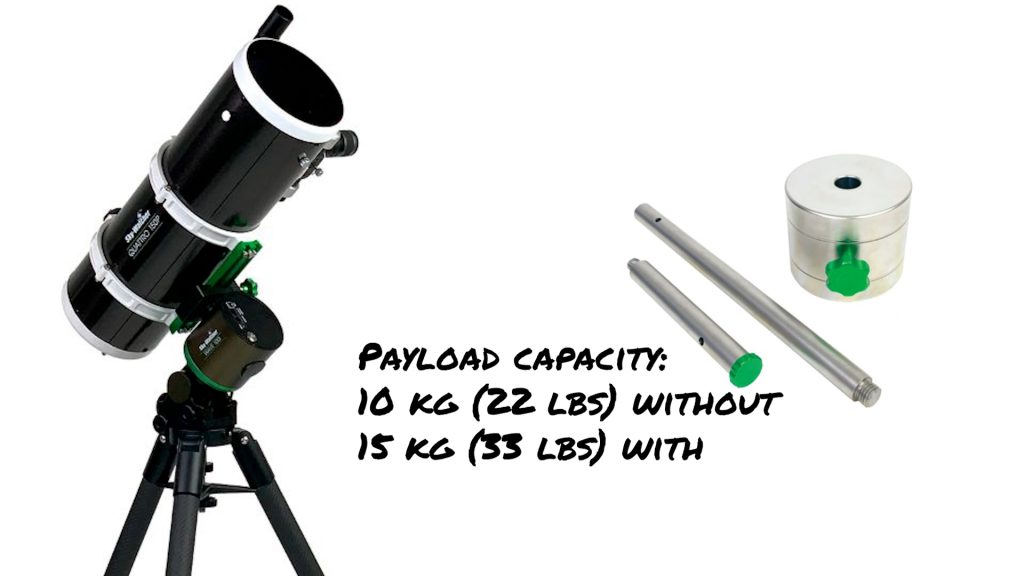
For those ready to make a slightly higher investment, the Sky-Watcher 150i is priced at $2195, which is just above both the ZWO AM5 and iOptron’s HAE29, priced at $1999 each. In terms of weight, the Sky-Watcher 150i weighs 5.8 kg, which is slightly more than the ZWO AM5 at 5.5 kg, with iOptron’s HAE29 being notably lighter at 3.7 kg. However, the Sky-Watcher 150i offers a superior payload capacity ranging from 15 kg without to 25 kg with a counterweight, whereas the HAE29 and AM5 boast capacities of 14 kg and 13 kg without, and 18 kg and 20 kg with a counterweight.

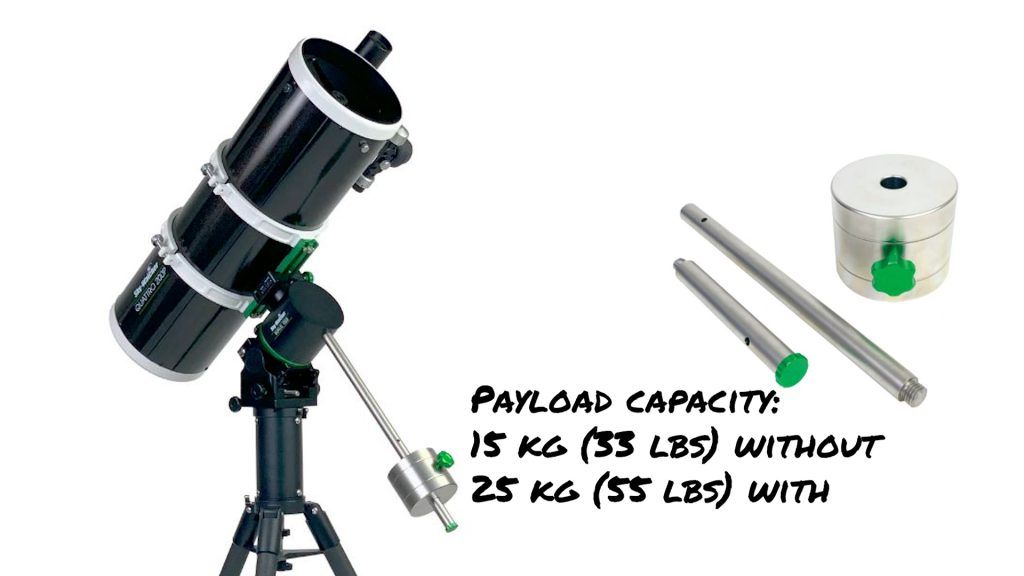
Sky-Watcher 100i & 150i: Motor type & Reduction Ratio
Both the Sky-Watcher 100i and 150i feature stepper motors and a 300:1 reduction ratio strain wave gear, mirroring the setup of the ZWO AM3 and AM5. Meanwhile, the iOptron HAE29 also features stepper motors, with higher reduction ratios of 640:1 for Right Ascension and 480:1 for Declination. A higher reduction ratio allows for slower shaft rotation with greater torque, leading to more precise tracking and minimal backlash.
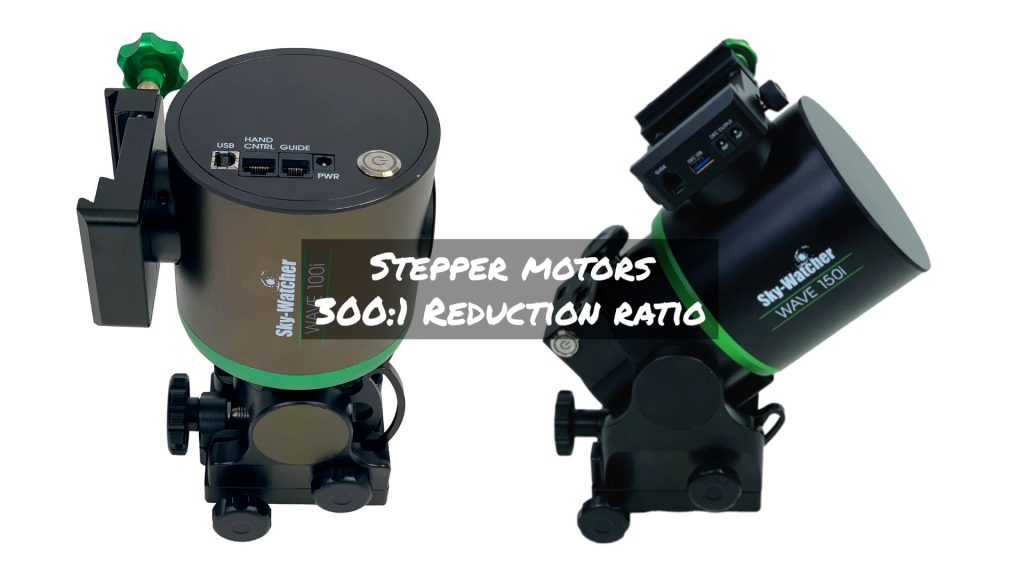
Sky-Watcher 100i & 150i: Connectivity and control options
The Sky-Watcher 100i and 150i offer wireless connectivity options with built-in WiFi and Bluetooth. Although it’s not yet fully explained how to control the mount wirelessly, like using an app on your smartphone or tablet as with other smart telescope devices, this information will likely be clarified soon. So stay tuned for future updates. Both mounts also feature a traditional HC port for the optional Sky-Watcher SynScan v5 hand controller, and a USB port for connecting and controlling the mount via external applications, such as EQMOD, or external devices like the ASIAIR Plus.
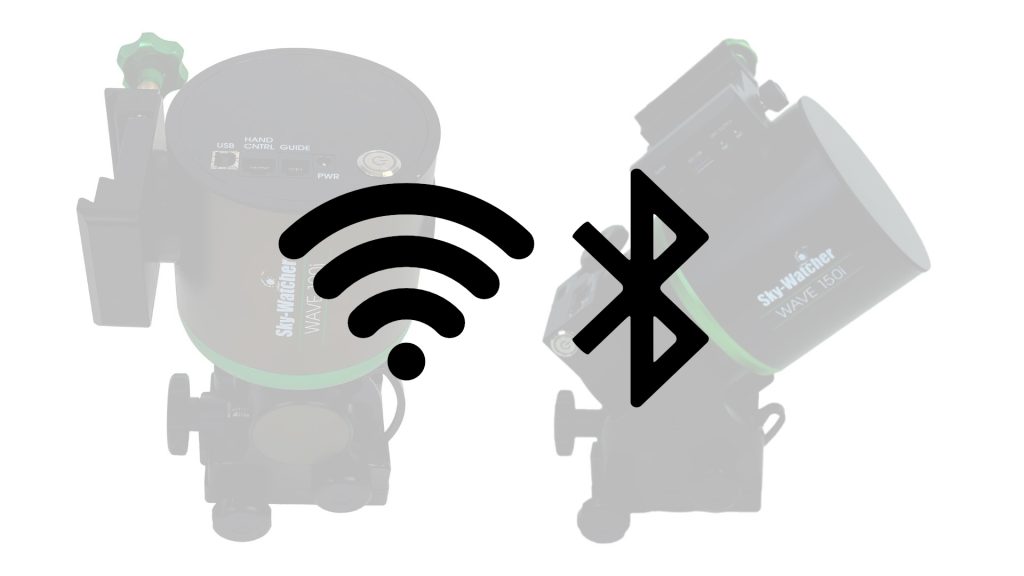
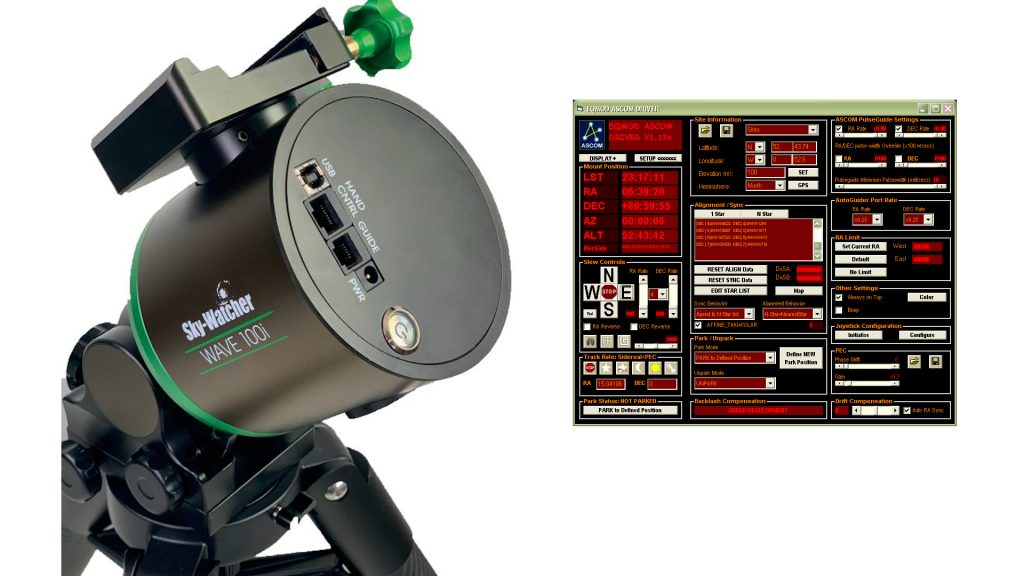
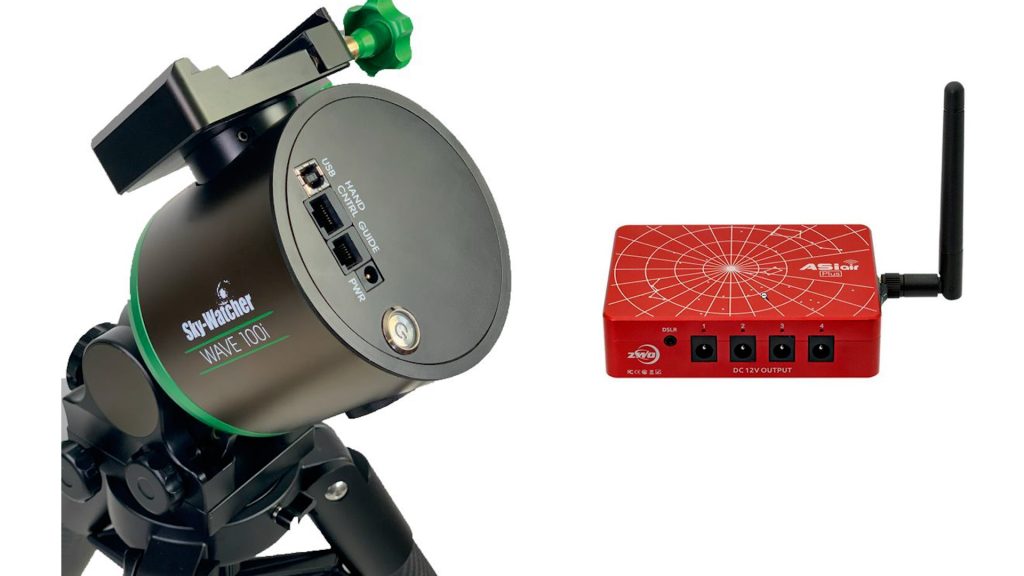
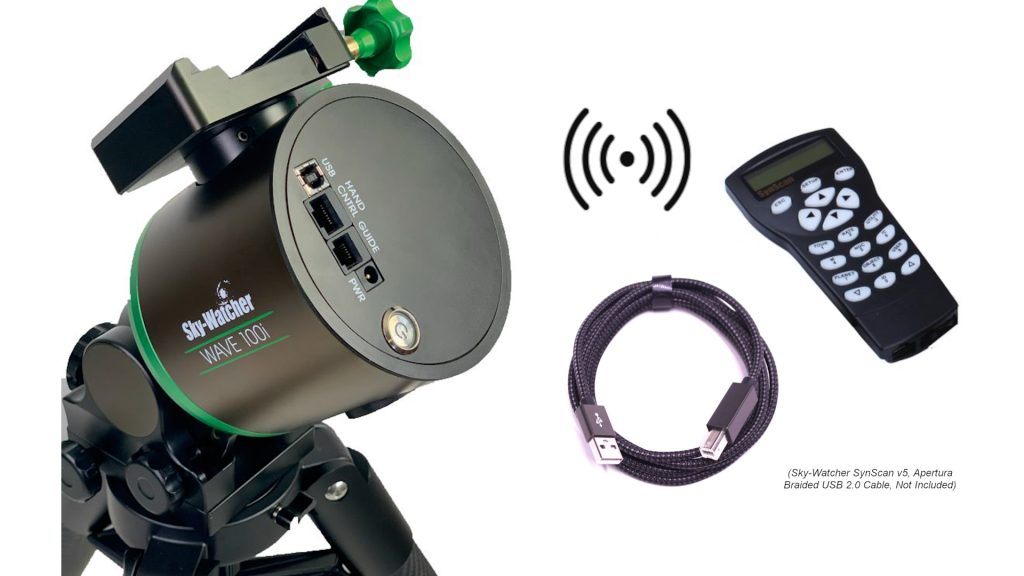
Both SkyWatcher mounts feature an extra ST4 guiding port. The 150i also features an extra USB 3.0 port and two DC power outputs to power your astrophotography gear from the mount to avoid cable snags. The 100i comes with a dual saddle option, enabling the setup of two imaging rigs while using just one mount. This could reduce imaging time to capture objects with two setups .
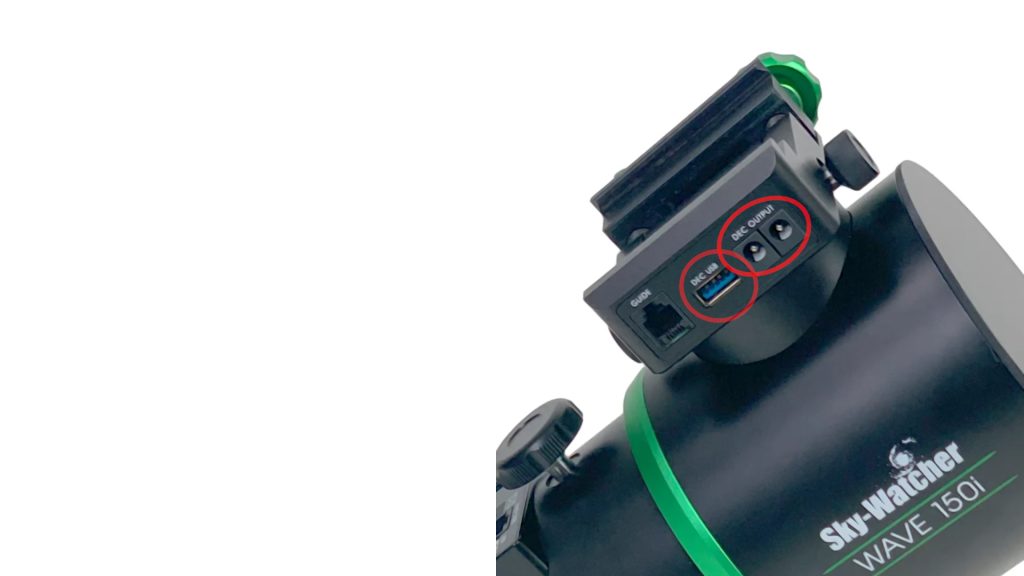
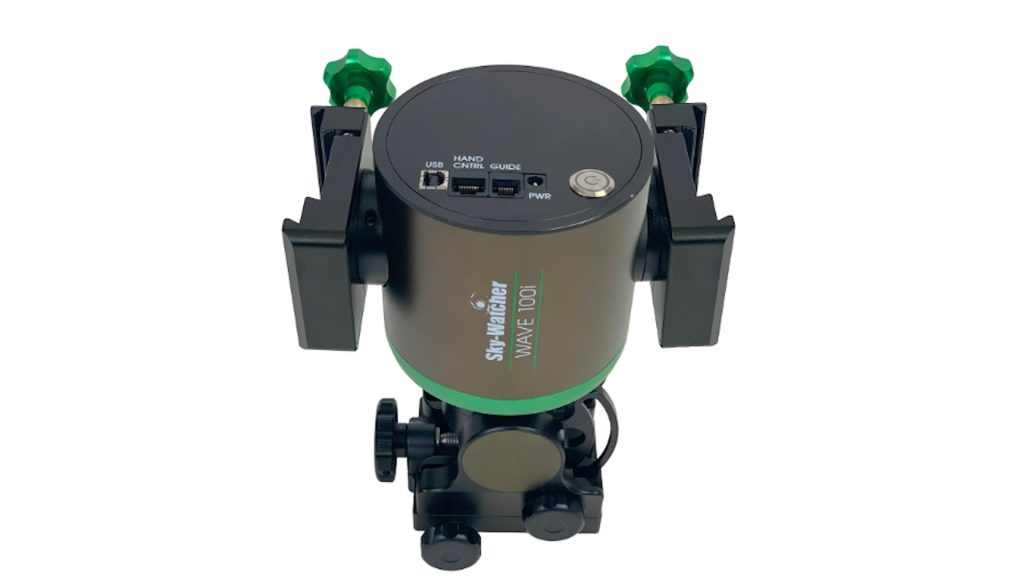
Optional extra’s for both SkyWatcher mounts include an AC adapter to power the mount, a pier extension tube which adds an additional 18 cm (7 inches) of height to accommodate longer telescopes, and an optional lightweight carbon tripod weighing 2.4 kg. (5.3 lbs).
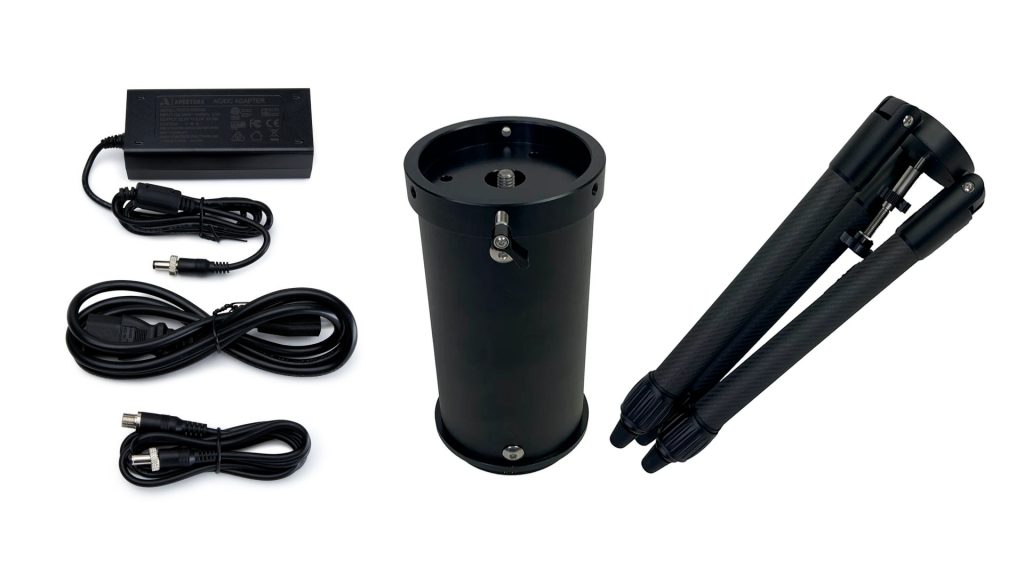
So what are your thoughts on Sky-Watcher’s venture into the strain wave telescope mount market, and how do you feel about these new mounts? Share your thoughts below. For a comprehensive overview of all harmonic drive mounts currently available in 2024, check out my blog here.
Wishing you clear skies!
Wido.